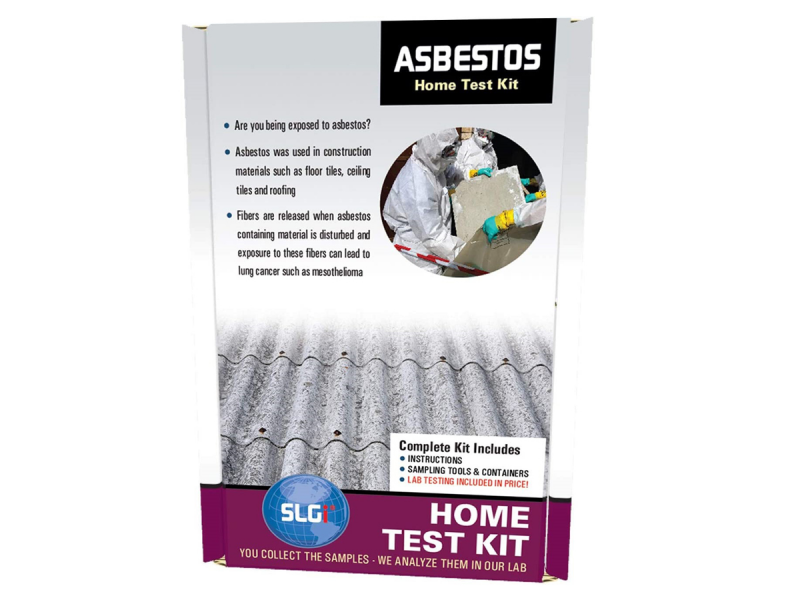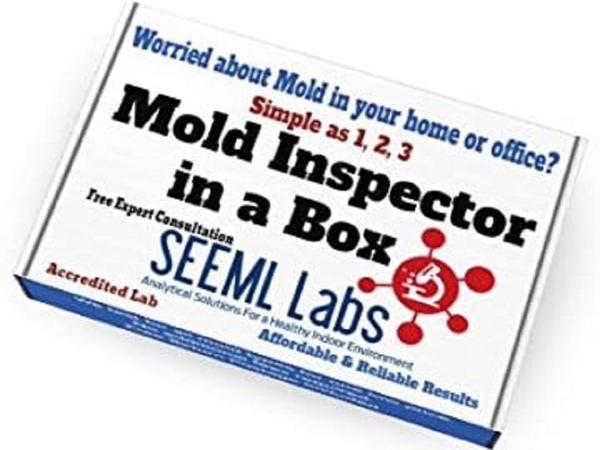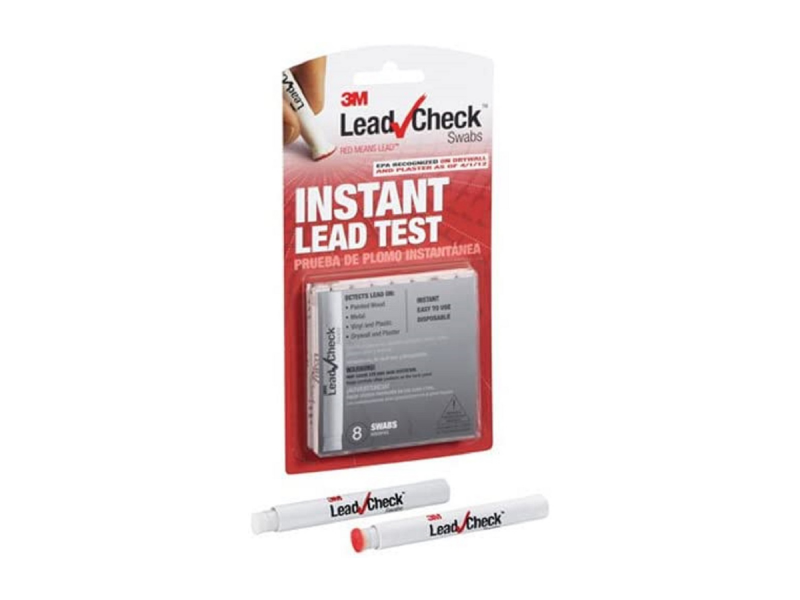- According to the US Environmental Protection Agency (EPA), Americans spend an average of 90 percent of their time indoors.
- Indoor air quality affects our overall health, but unfortunately, many of the pollutants that can cause problems are odorless and undetected until symptoms such as respiratory issues, digestive issues, fatigue, and sleepiness appear.
- Here are all the ways to test indoor air quality and how you can improve it.
- If you’re also looking to make the air inside your home more comfortable to breathe, check out our guide to the best humidifiers.
According to the US Environmental Protection Agency (EPA), Americans spend about 90 percent of their time indoors. While the walls of our homes can help shield us from some air pollutants, infiltration occurs in every indoor space.
Unfortunately, many of the pollutants that can cause problems are odorless and undetected until symptoms such as respiratory issues, digestive issues, fatigue, and sleepiness appear.
“Health risks associated with indoor air pollution have not, in general, received adequate attention,” says Dr. Junfeng Zhang, professor of global and environmental health at Duke University’s Nicholas School of the Environment. Dr. Zhang recommends diligently monitoring and working to improve the indoor air quality in our homes through regular testing and making adjustments to our daily habits.
Inspecting your home for indoor pollutants and establishing the AQI (Air Quality Index), a measurement set by the EPA to determine the risk of health problems associated with indoor and outdoor air pollution, can be done by a certified air quality consultant or a home test kit.
Key irritants that should be examined are:
- Combustion Particles
- Carbon Monoxide
- Radon
- Asbestos
- Mold
- Lead
- Pesticides and VOCs (Volatile Organic Compounds)
- Allergens such as dust mites, pollen, pest particles, and pet dander
If anyone in the household is experiencing respiratory distress, allergic reactions, symptoms of confusion with no specific cause, or overall deteriorating health, an indoor air quality analysis can assist an immunologist or allergist in determining the proper treatment.
As Gary Gross, M.D. of Allergy Partners in Ocean, New Jersey explains, "The allergist or immunologist most often deals with conditions affecting the places where the environment and the body come into contact. These exposures to allergens lead to inflammation of organs or tissues."
At this time, there is no single DIY test kit or monitoring system that covers every type of pollutant. However, after testing for specific irritants, there are monitoring systems that can help determine the quality of the indoor air you are breathing.
How to test indoor air quality
As a good basic monitor for those suffering from allergies, the Ecowitt WHO290 Air x Monitor provides temperature and humidity levels and measures the amount of particulate matter in the air. It has an easy-to-read digital monitor with a color-coded air quality level indicator. The monitor runs on rechargeable batteries with a solar panel backup.
For more extensive monitoring, the Airthings Wave Plus Indoor Air Quality Monitor reads levels of radon, carbon dioxide, VOCs, humidity, temperature, and barometric pressure. It does not measure particulate matter levels. The battery-operated monitor can be placed anywhere in your home and by waving your hand in front of the device, you receive a color-coded light to indicate the air quality index level. It also works with Alexa and Google Assistant, and you can connect via Bluetooth to the Airthings App or log into the Airthings dashboard for more detailed information about the quality of your indoor air.
Product Card Module: WHO290 Air x Monitor Card size: smallProduct Card Module: Wave Plus Indoor Air Quality Monitor and Radon Detector Card size: small
How to test for specific pollutants
While some indoor air pollutants can aggravate allergies or asthma, others are deadly. We have compiled a list of indoor pollutants and suggestions on how you can test for them and reduce your exposure.
Click the links below to go directly to each pollutant, or keep reading for a comprehensive look at testing and preventing indoor pollutants, and how to improve your indoor air quality:
- How to test carbon monoxide levels
- How to test radon levels
- How to test asbestos levels
- How to test for mold
- How to test for lead
- How to test for volatile organic compounds (VOCs)
- How to test for allergens
- How to improve air quality
How to test carbon monoxide levels

Tobacco smoke, gas and kerosene space heaters, woodstoves, fireplaces, gas stoves, and gas clothes dryers are sources of combustion particles and gases like nitrogen dioxide and carbon monoxide. Excessively high levels of particles from incompletely burned fuel can irritate or damage lung tissues. Exposure to nitrogen dioxide can irritate the mucous membranes in the respiratory system and cause shortness of breath that can contribute to the development of lung diseases such as emphysema.
The most dangerous combustion gas is carbon monoxide, an odorless substance that interferes with the delivery of oxygen throughout the body. At high concentrations, it can cause death.
To reduce exposure to combustion particles and gases:
- Never use a fuel-burning space heater in an unvented space. Open a door or window slightly to reduce carbon monoxide levels.
- Install and use exhaust fans over gas ranges and cooktops.
- Keep gas appliances properly adjusted and serviced.
- Use only woodstoves that meet EPA emission standards.
- Have HVAC systems inspected annually by an authorized technician and promptly repair any damaged parts and ducts.
- Do not idle a car in an attached garage.
- Do not smoke in your home or permit others to smoke
Just as every home should have smoke detectors, it should also have a carbon monoxide alarm on every level, including the basement. Homes without gas appliances typically have levels of carbon monoxide around 5 parts per million (ppm) but as levels rise, so do health concerns. Exposure for an adult to 200 ppm for just two hours can cause headaches, dizziness, and fatigue. At 1,600 ppm, death can occur within one hour. To monitor levels, one of the highest-rated alarms is the First Alert OneLink Smoke and Carbon Monoxide Alarm.
Battery operated, this dual system can be connected with multiple alarms to create a wireless safety network. A voice alarm gives a clear warning of where the problem is located and sounds once carbon monoxide levels reach and remain at 50 ppm. The alarm batteries should be replaced yearly and the detector replaced after five years.
Product Card Module: Smoke and Carbon Monoxide Alarm Card size: small
How to test radon levels

According to the EPA, radon is the leading cause of lung cancer among nonsmokers. Another colorless, odorless gas, radon seeps into your home from building materials and rocks, soil, or water beneath your home. The only way to know if you have a radon problem is to test the air in your home.
If the test shows high levels of radon, a qualified contractor can lower radon levels by using techniques to prevent the entry of radon into the home. Select a contractor with state certification and a guarantee to reduce radon levels to 4 picocuries per liter (pCi/L) or below. The average indoor radon level in homes is 1.3 pCi/L.
There are two types of radon gas testing kits. One is a short-term initial measurement test that every homeowner should use. The First Alert Radon Gas Test Kit includes testing materials, detailed instructions, and the cost of laboratory fees to determine the radon levels. Results are sent within 72 hours after the kit is received by the lab.
If levels are high, the EPA recommends a long-term 90-day test like Accustar Alpha Track Test Kit AT 100. Radon levels can fluctuate depending on humidity levels and other factors. A long-term test will give a more accurate reading and can confirm initial short-term results. Any test result higher than 4 pCi/L should be corrected for the indoor air quality to be safe.
Product Card Module: Radon Gas Test Kit Card size: smallProduct Card Module: Alpha Track Test Kit AT 100 (Two-pack) Card size: small
How to test asbestos levels

Asbestos is a naturally occurring fibrous silicate mineral that has been used for decades to create building materials. Unfortunately, inhaling the fibers or asbestos dust can also cause chronic lung disease. While the highest level of toxicity occurs when building materials (insulation, flooring, wiring, carpet padding) are disturbed during renovations, you can test for asbestos particles in the air and surfaces with a home kit.
The Schneider Labs Asbestos Test Kit includes everything you need to take a sample and includes return shipping, lab fees, and expert consultation on the results. The certified lab turnaround time is five days and there is an online portal to track your test sample. If you need to test several types of building material, you will need an additional test kit for each material.
While the test results can give you some peace of mind if the results are negative, if they are positive, you will need to hire a professional asbestos abatement company to remove the hazardous material.
Product Card Module: Asbestos Test Kit Card size: small
How to test for mold

Mold spores are present everywhere, and with the right temperature and moisture levels, they can thrive and grow. The common molds found in homes can usually be classified into three categories: allergenic, pathogenic, and toxic.
Allergenic molds like those growing in your bathroom shower stall can usually be removed with home disinfecting products. Pathogenic molds are particularly harmful to young children and adults with compromised immune systems and usually require professional treatment. Toxic molds produce poisonous chemicals and require a professional abatement team to kill the mold and remove any affected surfaces.
You can reduce the possibility of mold growth in a home by:
- Lowering humidity levels in a room or throughout the home.
- Increasing ventilation in high-humidity rooms with a dehumidifier, ceiling vent, or open window.
- Emptying and cleaning water trays in air conditioners, refrigerators, and dehumidifiers regularly.
- Using paint that has an anti-mold and mildew agent added.
- Repairing leaky plumbing and appliances immediately.
- Venting clothes dryers to the outdoors.
The EPA does not endorse home testing for mold and recommends having homes professionally tested if you are experiencing health problems and are concerned about the presence of mold growth. There are home kits available that can help you identify types of mold and help you decide on whether professional testing is necessary.
Mold Inspector in a Box includes three tests for wet or dry surfaces. The kit includes testing supplies, lab fees, and a detailed report. Results are returned by email within one day once the samples are received, with a phone consultation within 48 hours.
Product Card Module: DIY Mold Test Kit (3 Tests) Card size: small
How to test for lead

The detrimental effects of lead can cause health issues with the central nervous system, renal system, and blood cells. Children who ingest lead can have impaired mental and physical development. Lead can be found in lead-based paint, contaminated soil, dust, and drinking water.
There are steps you can take to reduce lead exposure:
- If you know you have lead-based paint on your walls, do not attempt to remove it yourself. If it is chipping, call in an expert.
- Keep areas where children play dust-free.
- If you work around lead, change clothes before entering your home and use a washable doormat to clean your shoes.
3M Lead Check Swabs are an easy-to-use test that gives immediate results. If the swab turns red, lead is present and you need to take action.
If you are concerned about lead and other contaminants in drinking water, a First Alert Drinking Water Test Kit includes everything you need to test samples at home to see if they meet EPA standards. In addition to lead, the kit tests for bacteria, pesticides, chlorine, and nitrates/nitrites.
How to test for volatile organic compounds (VOCs)

Pest control products, some household cleaners, air fresheners, candles, paints, solvents, and dry-cleaned clothing can all contribute volatile organic compounds (VOCs) that pollute our indoor air.
Even naturally-scented products can cause problems; fortunately, "Most patients who stop using scented products notice an improvement in their symptoms," says Stanley Fineman, M.D., of Atlanta Allergy & Asthma and president of the American College of Allergy, Asthma, and Immunology.
VOCs can irritate the respiratory system and cause headaches, eye irritation, nausea, and damage to the liver, kidneys, and central nervous system.
To reduce the amount of exposure to VOCs indoors, follow these tips:
- Choose non-chemical methods of pest control and home cleaning.
- Use unscented products whenever possible.
- Increase ventilation when using chemical-based products indoors.
- Take as many items as possible outside to clean or treat with pesticides.
- Do not store pesticides and solvents inside the home. Dispose of unwanted products and empty containers responsibly.
- Choose a green dry cleaner or allow freshly dry-cleaned clothing to air in a well-ventilated space.
- Choose beeswax instead of petroleum-based candles.
- Keep household cleaning and care products out-of-reach of children
Home Air Check is a one-use test that analyzes your home for hundreds of airborne chemicals. It also checks for active mold spores in the air. The kit can cover a 2,200-square-foot home and uses a small pump and sample tubes to gather air samples. You mail the kit back to the laboratory in a postage-paid box for analysis. Results are emailed within five business days, along with instructions for reducing any problems. Phone and email support are available for additional questions.
How to test for allergens

While many products can cause allergic reactions, there are several specific allergens that are often present in high levels indoors. According to Dr. Fineman, "The first step in treating allergies to dust mites, mold, animal dander, and pollen is allergen avoidance. While often difficult to completely avoid these allergens, patients can take specific measures to lessen their exposure, which may, in turn, help them minimize symptoms from allergic diseases like asthma or allergic rhinitis. Understanding these major allergens and how we are exposed to them is required in any allergy treatment program."
The most effective ways to reduce the level of allergens in a home are to remove difficult to clean surfaces like carpeting and to do more frequent and thorough cleaning.
To reduce allergens in your home:
- Use allergen-proof mattresses and protective pillow covers to help control dust mites.
- Wash bedding in hot water (above 130 degrees F.) to kill dust mites.
- Remove carpet and install hard-surface flooring that can be cleaned more easily and frequently.
- Remove dust catchers and clutter from living spaces.
- Vacuum floors and upholstered furniture regularly with a vacuum that contains a high-efficiency filter (HEPA).
- Reduce the level of outdoor pollen by keeping windows and doors closed, removing shoes as soon as you enter your home, and changing clothes immediately after doing outside activities.
- Control indoor temperature (no higher than 72 degrees F.) and humidity (no more than 50%) to reduce dust mites.
- Change or clean HVAC filters often.
- Keep pets outside as much as possible. Bathe them and wash their indoor bedding at least weekly.
Once thought to improve air quality by removing carbon dioxide and emitting oxygen, adding lots of houseplants to your home may contribute to more breathing problems than benefits. The idea of the benefit of houseplants started with a NASA study in the controlled atmosphere of a space capsule. But in real life, houseplants can release VOCs into the air and the soil is often filled with contaminants like bacteria, mold, and pesticides. A study by the US EPA reports that the average household would need 680 plants to achieve the benefits of a carbon dioxide/oxygen exchange.
There are no DIY tests available for specific allergens. However, the Home Air Check test kit or one of the air quality monitoring systems mentioned earlier (Ecowitt WHO290 Air Quality Monitor or Airthings Wave Plus Indoor Air Quality Monitor) can help you determine if you need to take action to reduce allergens in general.
How to improve indoor air quality

Maintain HVAC systems
Whether you have a central heating and air conditioning system with ductwork or use individual units, they must be kept in top working condition. One way to help that along is to follow your systems' guidelines on changing the filters. Check with your service technician for filter sizes and choose a filter like Filtrete Ultrafine Particle Reduction for your system.
Several members of my family suffer from allergies and one of the first things our allergist shared was the importance of maintaining our HVAC system and changing the filters regularly. The Filtrete filters made a huge difference in how well we could breathe and sleep since we live in a climate where the HVAC system is in use almost year-round.
Product Card Module: MPR 2800 14x25x1 AC Furnace Air Filter Card size: small
Use a HEPA filter vacuum
The act of vacuuming can actually increase the number of allergens in the air for a short time so it is important to capture and trap them using the best tool possible. I thought my vacuum was doing a good job until I tried the Shark Uplight Corded Lift-Away. I could not believe the amount of dust I was leaving behind.
I had just vacuumed the living room when the Shark arrived. After a quick assembly, I ran over the area rug and hardwood floors again. The dust cup was nearly full! Selecting a vacuum with a cleanable dust cup, anti-allergen seal technology, and a HEPA (high-efficiency particulate air) filter like the Shark Uplight Corded Lift-Away is crucial. Replace the filter as recommended and empty and clean the dust cup after every use.
Product Card Module: Apex UpLight Lift-Away DuoClean Card size: small
Invest in an air purifier
Getting rid of every source of indoor allergens is nearly impossible, especially if you have a beloved pet. An air purifier like the Elechomes Pro Air Purifier with HEPA filter placed in a commonly used area of the home can help capture and reduce some of the irritants. This air purifier monitors the air quality and adjusts the fan speeds to accommodate the level of impurities. As with any appliance that contains a filter, clean and replace it following the manufacturer's recommendations.
Product Card Module: Pro Series Air Purifier for Large Room with True HEPA Filter Card size: small
Choose low-VOC products
Whenever possible, read labels and choose products that release low volatile organic compounds into the air. I'm particularly sensitive to some fragrances, and I've found these products to be a good fit for my home:
- Healthier Choice Green Premium Carpet Cushion ($268.20 per 270 sq.ft. roll) is low VOC and is mold, mildew, bacteria, and dust mite resistant.
- UCO 12-Hour Natural Beeswax Candles ($31.90 per 9-pk) are paraffin-free and clean-burning without emitting VOCs.
- Method All-Purpose Cleaner ($3.29) and other Method products like hand soap, dish soap, and laundry products are green cleaners with plant and mineral-based ingredients.
- ECOS Wood Stains ($59.95) and ECOS paints have no VOCs and no odor, making them perfect for indoor and outdoor projects.
Remove stale air
Open windows and doors from time to time to allow fresh air to move through your home but try to avoid times when seasonal allergens are exceptionally high. Use bathroom vent fans and kitchen range vents to help control humidity levels and to remove particulates from the air.
- Delta Breez's Green Builder Exhaust Bath Fan is EnergyStar efficient-rated, low noise, and is constructed from non-corrosive steel.
- Cosmo's Wall-Mount Range Hood can be tied into new or existing ductwork or installed as a ductless appliance. A carbon filter kit can be used for ductless installation to clean air that is recirculated.
Product Card Module: GreenBuilder Series 100 CFM Wall or Ceiling Bathroom Exhaust Fan Card size: smallProduct Card Module: 36 in. Ducted Wall Mount Range Hood in Stainless Steel with Touch Controls Card size: small










